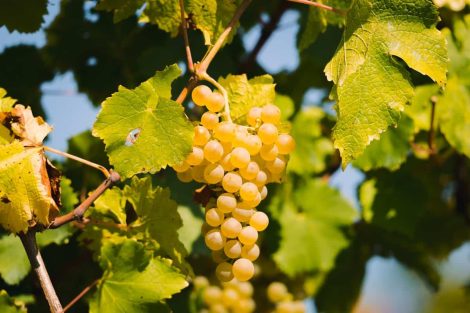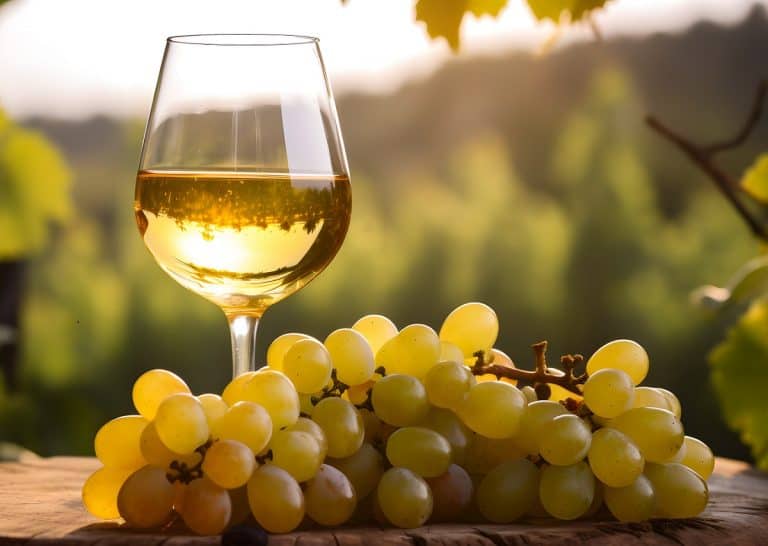In Friuli Venezia Giulia, among the territories particularly suited for the production of great white wines and more - including Collio, Colli Orientali, Grave, the precious passito wines Picolit and Ramandolo, and Refosco - there's a small area that slips towards Trieste, along the Adriatic coast near the Slovenian border: the Carso.
White rock, scorched and dry, beaten by the cold bora wind, characterizes the area, a harsh and difficult land with rugged and vigorous nature, with piercing winters and scorching summers.
The primary white grape in the area is Malvasia Istriana, but excellent wines are also produced from Chardonnay, Pinot Grigio, Sauvignon, Traminer, Cabernet Franc, Cabernet Sauvignon, Merlot, Refosco dal Peduncolo Rosso, and Vitovska. And it is precisely on the best labels obtained from the latter that we focus here.

Vitovska is an ancient native white grape variety, present in the Carso region since time immemorial. Its name seems to come from the village of Vipacco, now in Slovenia (Vitovlje). Only a grape tempered and selected over the centuries could resist and survive such harsh and strong contrasts. An extreme and strongly territorial grape variety, for which there are no similar varieties throughout the Mediterranean. A border grape, often in the past vinified as a blend with other grapes, especially Malvasia Istriana, but increasingly offered in its crystalline purity. Thanks to some passionate winemakers from the Carso, we can rediscover Vitovska in its most authentic and rigorous expressions.
The Best Vitovska Wines
Here are the best Vitovska labels according to Gambero Rosso, obtained from the homonymous grape variety in purity or present in high percentage in the indicated wines, evaluated this year with Tre Bicchieri or Due Bicchieri Rossi (having reached the final during the tastings for the Gambero Rosso 2024 Vini d'Italia guide) or Due Bicchieri.
Vitovska V. Collection 2016, after a maceration of 20 days in contact with the skins, matures for 22 months in large Slavonian oak barrels and then refines in the bottle for a long time. Well-deserved Tre Bicchieri. Benjamin Zidarich revolutionized his father's company in 1988, which at the time could only count on half a hectare of vineyard, progressively expanding it and favoring the native varieties of the area until reaching a respectable extension. Anyone who has never visited the vineyards and cellars of the Trieste Karst cannot have an exact measure of what is meant by heroic viticulture. The climate, moderately continental on the plateau, is characterized by the influence of the Adriatic Sea and the cold Bora wind, which often blows violently. The wines interpret the characteristics of the Karst, starting from the bright colors, continuing with iodine and saline scents, and then marking the minerality of the terroir.
The Castelvecchio company, owned by the Terraneo family since 1978, is among the most flourishing viticultural realities of the Gorizia Karst. The 2022 Vitovska excels in fragrance and drinkability. The aromas are iodized, reminiscent of thyme and the sea; the palate is rich, with hints of dried fruit and herbs, for a saline and prolonged finish. Naturally calls for a sea bream with salt.
Prepotto di Duino Aurisina is a village on the Karst plateau characterized by land, stone, sea, sun, and wind. Matej Lupinc understood that these were the right ingredients to produce high-quality wines, and in 1970, he was the first to bottle genuine wines, rich in aromas and saline nuances.
We are on the Trieste Karst, in San Dorligo della Valle, in the area called Breg, a territory boasting a centuries-old agricultural tradition and a millennia-old culture. Here Rado Kocjancic cultivates five hectares of vineyards, which in these parts are not few, favoring native grape varieties.
The motto of the brothers Andrej and Nevo Skerlj is "Live the Unusual Karst" as it is able to provide, in addition to wine, genuine products that express the territory. In the splendid Bajta Fattoria Carsica cellar nestled in the rock, three local cultivars are vinified: Terrano, Vitovska, and Malvasia.
Sandi Skerk is one of the best interpreters of Karst viticulture. To understand what is meant by "heroic viticulture," you must have visited these places, where the conflict between man and rock is part of everyday life. Local traditions dictate that the skin maceration in the must can last for several weeks, then simple transfers and above all no filtration. In the splendid cellar carved into the hard rock, a true masterpiece of human ingenuity, mysterious drafts from unreachable gullies guarantee a cool temperature and constant humidity throughout the year. In the last edition of the Guide, the wines were not presented, as Sandi decided to give them additional bottle aging so that they could better express their characteristics. A more than opportune choice, given the results.


 Farewell cacio e pepe in New York. "With tariffs, Pecorino Romano will also become more expensive." The warning from Giuseppe Di Martino
Farewell cacio e pepe in New York. "With tariffs, Pecorino Romano will also become more expensive." The warning from Giuseppe Di Martino Against tariffs? Here are the US foods that could be "hit"
Against tariffs? Here are the US foods that could be "hit" US tariffs: here are the Italian wines most at risk, from Pinot Grigio to Chianti Classico
US tariffs: here are the Italian wines most at risk, from Pinot Grigio to Chianti Classico "With U.S. tariffs, buffalo mozzarella will cost almost double. We're ruined." The outburst of an Italian chef in Miami
"With U.S. tariffs, buffalo mozzarella will cost almost double. We're ruined." The outburst of an Italian chef in Miami "With US tariffs, extremely high risk for Italian wine: strike deals with buyers immediately to absorb extra costs." UIV’s proposal
"With US tariffs, extremely high risk for Italian wine: strike deals with buyers immediately to absorb extra costs." UIV’s proposal






